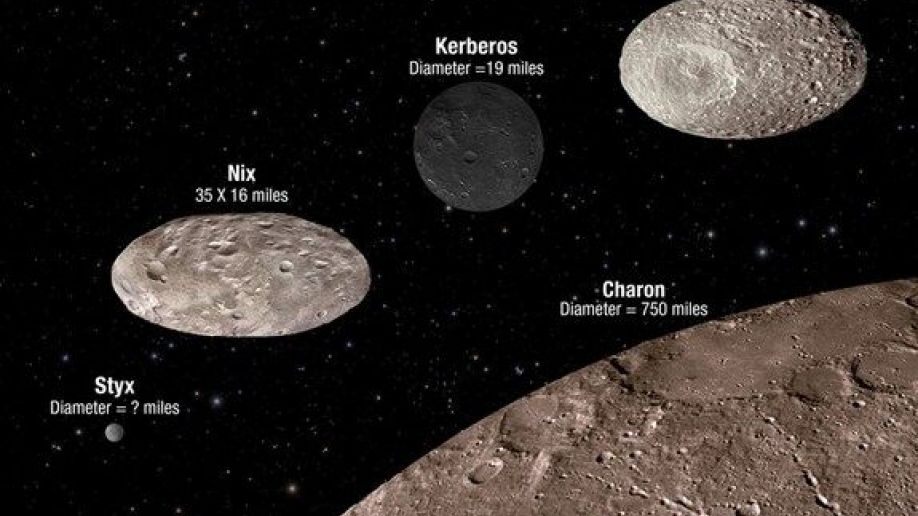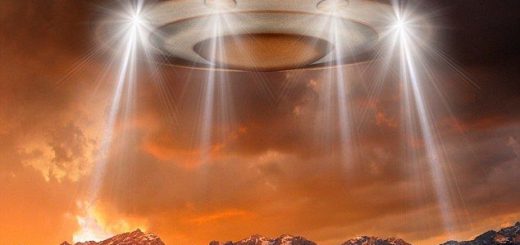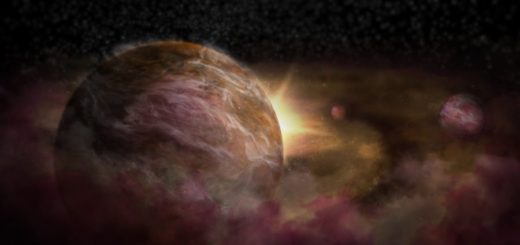Pandemonium! Motion of Pluto’s moons perplexes scientists

The orbits of Pluto’s four smallest moons are even more chaotic than scientists had expected, according to new results from the New Horizons mission, which made a close flyby of Pluto in July.
“The way I would describe this system is not just chaos, but pandemonium,” Mark Showalter, a co-investigator on the New Horizons mission, said Monday during a news conference at the meeting of the Division for Planetary Sciences of the American Astronomical Society. “We honestly have not seen anything like this before, and we still don’t know what to make of it.”
The new results show that as the four moons orbit Pluto and its largest moon, Charon, some of them are spinning incredibly fast, one is spinning backward against its orbit and some are tilted on their sides. This is in stark contrast to nearly every other moon in Earth’s solar system, most of which are locked into a more rigid and unmoving orbit around their parent bodies, making Pluto’s moons the wild children of the solar system. [Watch: Pluto’s Four Tiny Moons’ Topsy-Turvy Tumbles]
Pluto has five moons. Its largest, Charon, has a diameter a little more than half that of its parent body. The two ice dwarfs experience what’s known as tidal locking or synchronous rotation, meaning the same side of Charon forever faces the same side of Pluto, even as they orbit around a common point in space. This tight relationship earns them the title of “binary planet.”
This spinning duo is orbited by four smaller moons, which scientists only discovered recently, between 2005 and 2013. Using data from the Hubble Space Telescope, scientists showed earlier this year that the four moons are not tidally locked around Pluto and Charon, and that the system might be somewhat chaotic. But now that more data have come down from New Horizons, scientists say things in the system are beyond disorganized — and it’s unexplainable.
Showalter said during the news conference that scientists expected to see “little wobbles” in the orbits of the four moons, but instead, they’re seeing extremely rapid rotation. Hydra, the most distant of Pluto’s moons, is spinning once every 10 hours during its 38-day cycle around Pluto, which means it spins 89 times every orbit.
“If Hydra were spinning much faster, material would fly off its surface due to the centrifugal force,” Showalter said in a statement from NASA. During the news conference, he said the other moons are rotating more slowly, but at a rate of six to 10 rotations per orbit around Pluto.
“This is unprecedented,” Showalter said at the news conference. “We simply have not seen a satellite system that does this.”
In addition to these rapid rotations, Pluto’s second-closest moon, Nix, is tilted on its axis by 132 degrees and is rotating backward.
Showalter clarified that it is not impossible to imagine that the moons would spin so rapidly following a collision with another object. What is so mysterious is that all four objects are spinning rapidly (it’s difficult to imagine a collision that would affect all four of them), and that the gravitational pull of Pluto doesn’t appear to have slowed them down, he said.
Typically, the gravity of a parent body would dissipate the planet’s rotational motion, “and yet that’s not what we’re seeing, so that’s really the puzzle,” Showalter said at the news conference. “The question is, why [don’t they] slow down? It’s not so much why [are they] so fast.”
“There’s clearly something fundamental about the dynamics of the system that we do not understand,” Showalter said in the statement.



 Creators of mankind
Creators of mankind Description of “Tall white aliens”
Description of “Tall white aliens” Where they came from?
Where they came from? About hostile civilizations
About hostile civilizations The war for the Earth
The war for the Earth “Tall white aliens” about eternal life
“Tall white aliens” about eternal life Video: “Nordic aliens”
Video: “Nordic aliens” Aliens
Aliens Alien encounters
Alien encounters The aliens base
The aliens base UFO
UFO Technology UFO
Technology UFO Underground civilization
Underground civilization Ancient alien artifacts
Ancient alien artifacts Military and UFO
Military and UFO Mysteries and hypotheses
Mysteries and hypotheses Scientific facts
Scientific facts


















